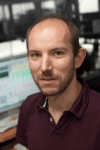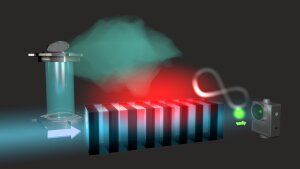Dr. Frank Setzpfandt
Image: PrivatePD Dr. habil. Frank SETZPFANDT
Email: f.setzpfandt@uni-jena.de
Phone: +49 3641 947569
Since 2016, Dr. Setzpfandt leads a Research Group focused on quantum optics, especially targeting quantum imaging and sensing approaches, as well as integrated quantum optics. Before, he was a PostDoc at the Institute of Applied Physics of the Friedrich Schiller University and the Nonlinear Physics Centre of the National University Canberra, Australia. He currently serves as CEO of the Thuringian Innovation Center for Quantum Optics and Sensors.
The research group for quantum optics at the Institute of Applied Physics is focusing on the generation of non-classical states of light and their application using theoretical and experimental approaches. Mainly, we are studying the generation of photon pairs by spontaneous nonlinear processes in various nonlinear photonic systems ranging from bulk crystals over different waveguide structures to nanostructured or atomically thin surfaces. We aim to fundamentally understand the nonlinear effects leading to photon-pair generation and how they depend on the material and geometry of the sources. We use this understanding to tailor the properties of the generated two-photon quantum states, like spectrum, spatial distribution, and entanglement, to meet the demands of specific applications. Furthermore, we investigate the application of photon pairs for quantum-enhanced imaging and spectroscopy techniques, where they can enable measurements with better signal-to-noise ratio or in hardly accessible wavelength ranges. Our research on one hand tries to understand fundamental aspects of quantum measurements, including the interaction of the photons with the samples under test, to develop new imaging and spectroscopy methods. On the other hand, we aim at bringing quantum imaging and spectroscopy closer towards applications by developing integrated measurement devices.
Research Areas
The research of Dr. Setzpfandt focuses on the generation of tailored classical and nonclassical states of light using nanostructured and integrated optical systems as well as the use of nonclassical light for imaging and sensing. This includes the following research fields:
- Integrated quantum optics
- Nonlinear optics in waveguide and nanostructures
- Photon-pair generation
- Quantum imaging and sensing
Teaching Fields
Dr. Setzpfandt currently teaches master-level courses on:
- Quantum Optics
- Quantum Imaging and Sensing
Research Methods
Dr. Setzpfandt uses a number of state-of-the-art characterization techniques, e.g.:
- Nonlinear frequency conversion and nonlinear spectroscopy
- Photon-pair correlation measurements
- Quantum ghost imaging
- Integrated optical circuit characterization

